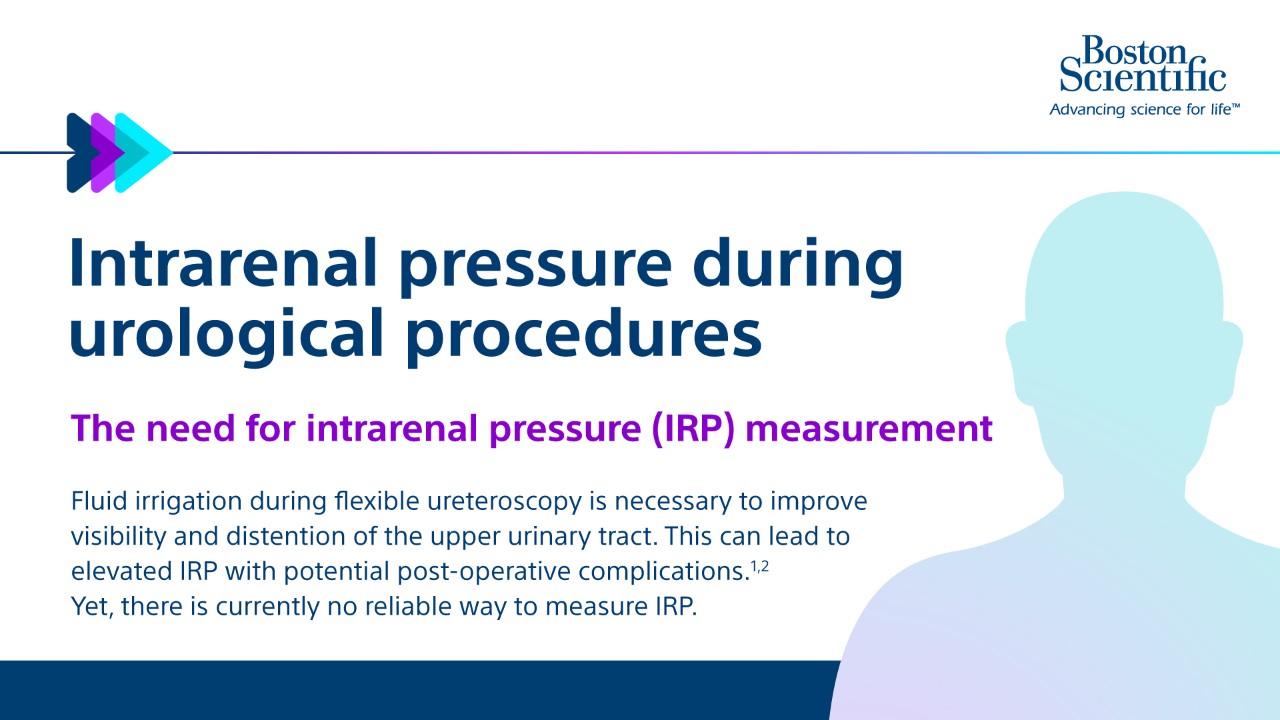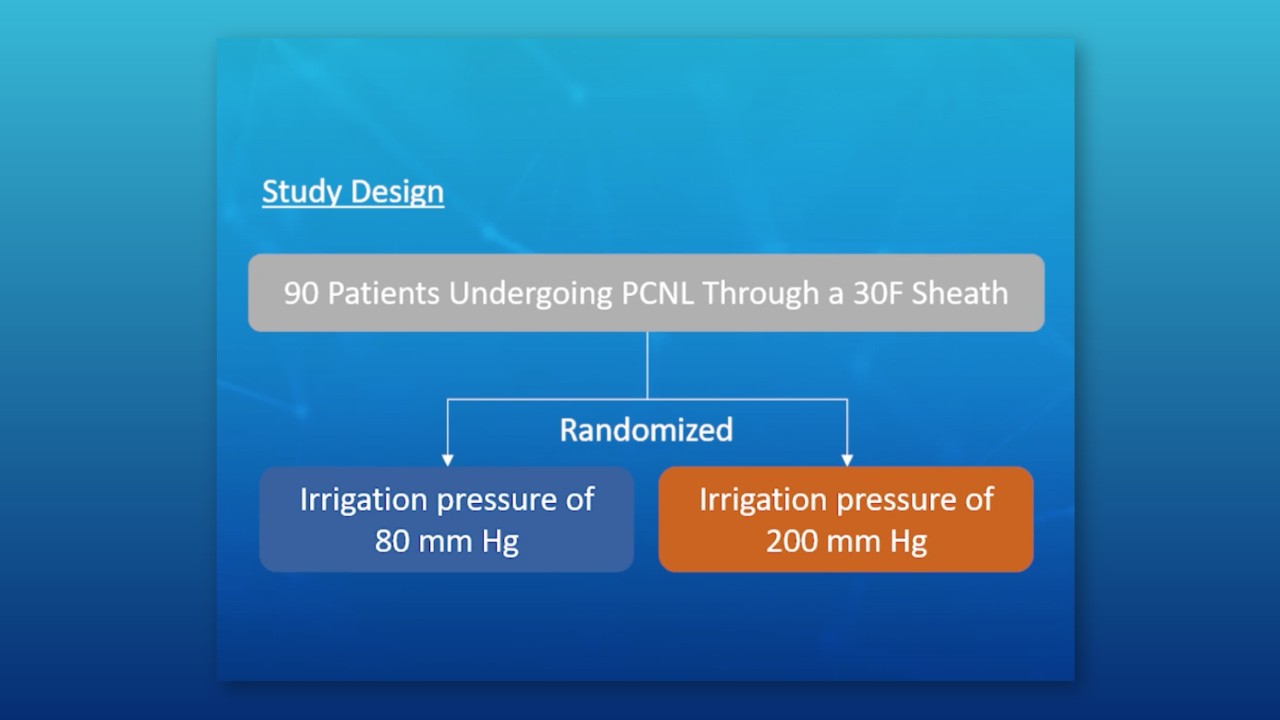Editorial commentary by: Manoj Monga, MD, FACS, Urologist, San Diego, California
Stone disease of the kidneys and urinary tract has been on the rise in recent decades and is estimated to affect about 7% of the world's population and just over 10% of people in the United States.1-3
Preference for ureteroscopy, which balances the effectiveness of direct treatment with a minimally invasive approach, is reflected in its increasing adoption over shock wave lithotripsy, though shock wave lithotripsy remains an important option in select patients based on stone and anatomical considerations.4 Although ureteroscopy is generally safe, serious complications can occur.5 A factor contributing to those complications may be intrarenal pressure (IRP), which is influenced by irrigation during the procedure. Unfortunately, there is limited data and, therefore, low awareness about the potential complications that may be associated with elevated IRP or how to control this pressure.6
Fluid irrigation and IRP
Fluid irrigation during flexible ureteroscopy is necessary to improve visibility and distention of the upper urinary tract; however, this can lead to elevated IRP with potential for related complications.6 Duration of exposure to elevated IRP, which is related to the length of the procedure, is also believed to be a potentially complicating factor.6 As ureteroscopes are increasingly used in more challenging upper urinary tract stone cases,7 the procedures tend to be longer, which may be associated with a rise in complications.6
Complications from IRP
In one pre-clinical study, higher irrigation pressure was associated with increased depth of absorption of irrigant during ureteroscopy8. Higher IRPs have also been hypothesized to be related to significant post-operative complications, including:
• Pyelovenous backflow.6,8-11 Fluid absorption during retrograde intrarenal surgery is thought to be due to increased intrapelvic pressure.9 This may have the potential to lead to pyelovenous backflow, which sends potentially infected urine into the circulation system.12
• Sepsis.6,11-13 According to a recent meta-analysis, patients undergoing ureteroscopy for treatment of kidney stones have a 5% risk of postoperative urosepsis (95% confidence interval 2.4%-8.2%).14 Another recent study found that among patients with URS, the average all-cause healthcare costs at 1 month in the septic cohort were $49,625 versus $17,782 in the non-septic cohort (p<0.0001).15
• Systemic inflammatory response syndrome (SIRS).6,13 During retrograde intrarenal surgery, SIRS occurs in 8.1% of cases, according to one recent study.13
• Other potential complications may include pain,11,16 fever,6,13 renal damage and pathological changes (animal studies have shown that kidneys subjected to high pressures can be irreversibly damaged),6,11,17 infection,6,11-13 subcapsular hematoma during ureteroscopy,18 and rupture of the collection system.17
Reducing the risk of elevated IRP
Considerations to reduce the risk of high IRP include:
• Keep the pressure as low as possible while maintaining good visibility.19 Decreasing IRP is thought to reduce risk of backflow.20
• Consider which type of irrigation allows the most control over – and ability to limit – the amount of pressure. Gravity bag irrigation may reduce IRP compared to other modalities, according to one study.21 However, hand-held devices might optimize tailored irrigation to the needs of the patient (ALARA principle; as low as reasonably achievable).
• Consider the use of a ureteral access sheath (UAS), which may improve irrigation flow and visualization while decreasing IRP.22 Literature suggests that the use of a UAS may improve irrigation flow and visualization within the ureter, reduce operative times and overall costs, and improve the effectiveness of surgery.23
• Ensure that the lumen of the sheath used to access the kidney is larger than the outer diameter of the scope; the space between the two allows fluids to flow out and may decrease the pressure.
• Keep the procedure as short as possible.
Although monitoring IRP and determining what is a safe pressure level is a developing field, it is important for urologists to be aware of the potential for IRP-related complications during ureteroscopy and to take steps to reduce the associated risks.

